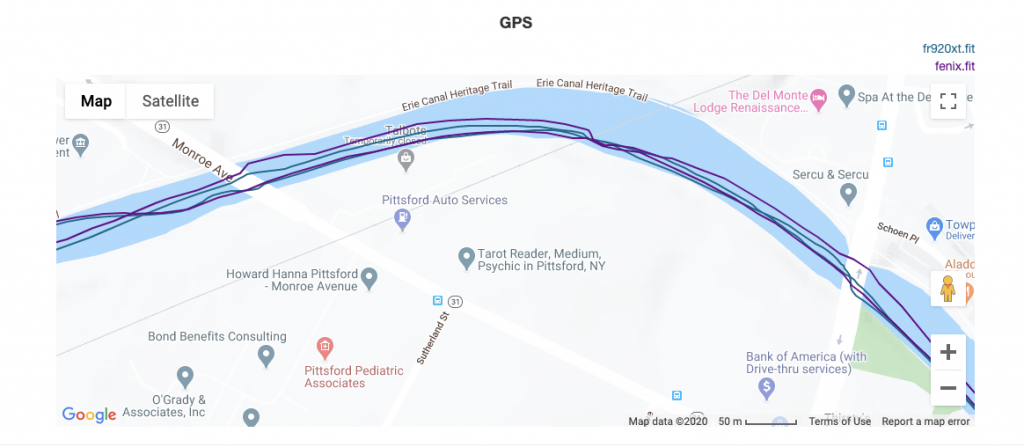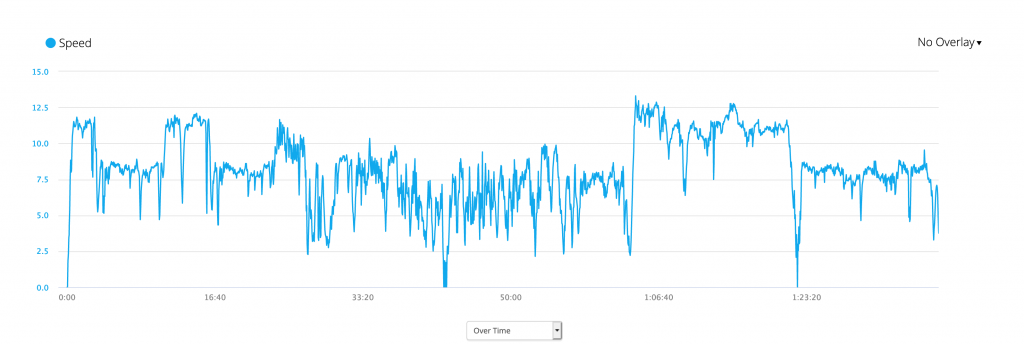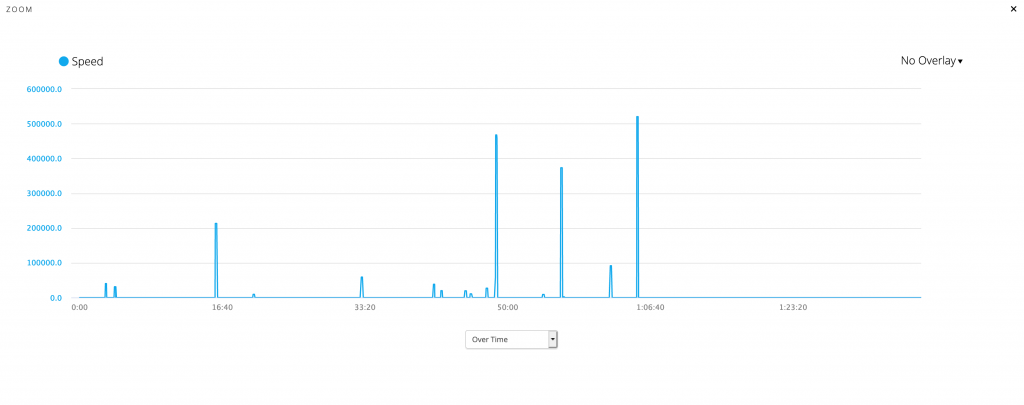When last I spoke about the 6X, I mentioned that they’d updated the firmware which vaulted the GPS performance from “utterly crap, I’d rather use a sextant” to “acceptable, but not as good as the 920XT”. Nothing has changed on that front. But I want to mention a few other things:
- I tried to use the “Race a previous activity” feature. On the 920Xt, this works pretty well. It shows your expected finish time, as well as how many minutes and seconds before or after that is compared to the activity you’re racing. Very useful for virtually racing yourself. I’ve tried it twice now on the Fenix, and I can’t make head nor tails on it. I’m a little handicapped that I don’t have my reading glasses in the boat, so I can’t read the field labels, but I thought I’d be able to logic them out. The field that I think should be should show the minutes and seconds faster or slower than the target starts off showing a time just a bit more than 2 hours (on a 1:33 activity). It still shows a time a bit more than 2 hours when it suddenly changes from white (meaning you’re that far ahead of the activity) to black (meaning you’re that far behind the activity). It also shows another field that shows your estimated time to completion and another showing distance remaining (which is handy). But without a usable time ahead/behind, I don’t really get information on whether I’m pacing it well, which is what I really want. So today when I did my regular “COVID Bassett” virtual Armond Bassett race, I had my Fenix showing the usual time/distance/heart rate/speed fields, and my 920XT showing the virtual race fields. I’m going to try using both and capturing it on video so maybe I can figure out what’s going wrong, and maybe show it to Garmin.
2. Garmin VIRB Edit, the software than I use for putting overlays on my videos doesn’t automatically pick up activities from my Fenix when it’s plugged into the computer the way it did with all my previous Forerunners (actually, I’m not sure if it did with the Forerunner 305, but definitely with the 310XT, the 910Xt and the 920XT). Instead I have to download the FIT file from Garmin Connect and upload it manually to Garmin VIRB Edit, which is annoying.
3. The Fenix 6 is utterly, 100% completely crap at reconnecting to the phone after they’ve been apart for any length of time. I charge my phone overnight in my office, but don’t take off the watch. In the morning, the 920XT would reconnect 99.9% of the time without any sort of intervention on my part. Just about every day, I will suddenly realize I’m not getting any notifications on my watch and go into the bluetooth menu on the phone to reconnect the Fenix. Today it disconnected while both the watch and the phone were on my surfski, less than 2 feet apart. My activity uploaded to Garmin Connect when I manually reconnected them afterwards, but for some reason it didn’t go to Strava. With the 920Xt, I was used to getting three notifications while I’m carrying my boat back to the car from the water – first one telling me the activity is on Garmin Connect, second one telling me it is on Strava, and third one telling me it is on Relive. I get that with the Fenix 6 more often than not, but certainly not with the certainty I would get it when using the 920XT. I may have to record a video to demonstrate how bad this is, since as I was writing this I realized my phone was in the other room, and when I went to pick it up it didn’t automatically reconnect to my Fenix.






